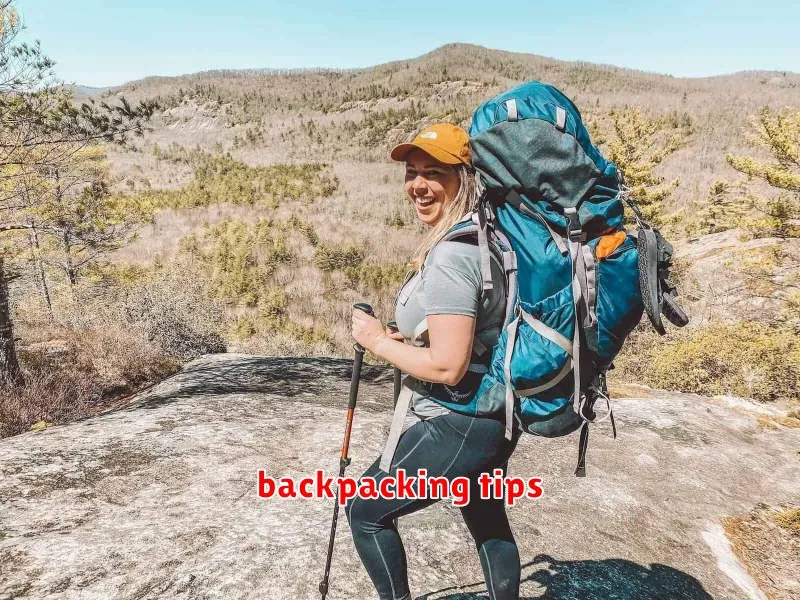So you’re dreaming of epic adventures, breathtaking landscapes, and unforgettable cultural experiences? Then get ready to ditch the luxury resorts and embrace the freedom of backpacking! This guide, 10 Essential Travel Tips for First-Time Backpackers, is your ultimate resource for planning an incredible and worry-free first backpacking trip. We’ll cover everything from packing light like a pro and mastering the art of budget travel to staying safe and navigating unexpected challenges. Learn how to maximize your travel experience, minimize travel costs, and create memories that will last a lifetime. Whether you’re a seasoned traveler looking to embrace a simpler style of travel or a complete first-timer, these essential tips will set you up for success. Let’s unlock the world together!
What to Pack for Your First Backpacking Trip
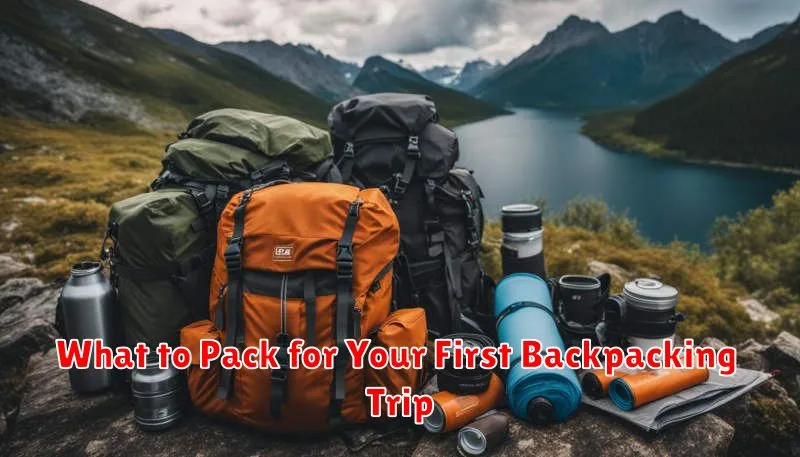
Packing light is key for a comfortable backpacking experience. Avoid overpacking by carefully considering your needs based on your destination and the duration of your trip. Prioritize versatile items that can serve multiple purposes.
Essentials include: a lightweight and waterproof backpack (consider a size between 50-70 liters), a comfortable and supportive sleeping bag rated for the expected temperatures, a lightweight tent or sleeping shelter, a cooking system (stove, pot, utensils), a water filter or purification tablets, and a first-aid kit.
Clothing should be chosen for layering and quick-drying capabilities. Pack moisture-wicking base layers, insulating mid-layers (fleece or down), a waterproof and windproof outer shell, comfortable hiking pants or shorts, and sturdy hiking boots that have been broken in.
Don’t forget the smaller, but important items such as a headlamp or flashlight, sunscreen, insect repellent, a map and compass (or GPS device), a knife or multi-tool, and a reusable water bottle. A good book or journal can also add to the experience.
Remember to check the weather forecast before you go and adjust your packing list accordingly. Consider bringing extra socks and underwear as these tend to get worn out quickly. Most importantly, pack smart, not heavy!
How to Choose the Right Backpack
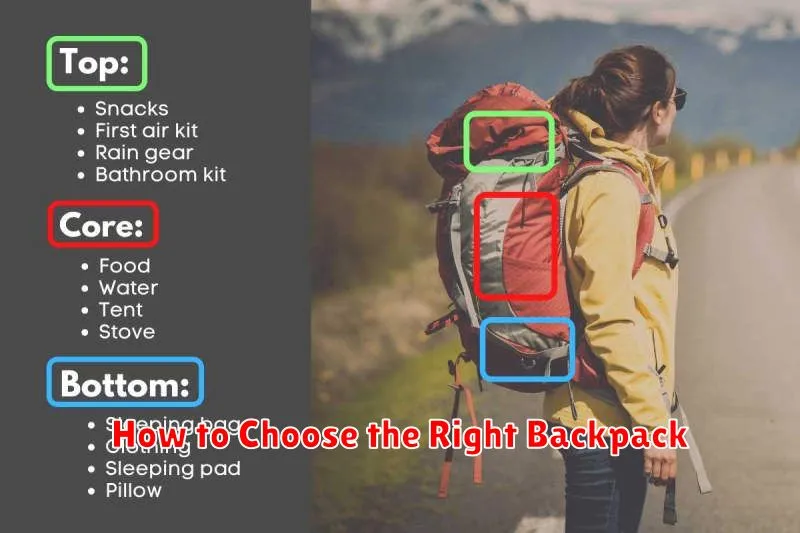
Choosing the right backpack is crucial for a comfortable and enjoyable backpacking trip. The wrong pack can lead to serious discomfort and even injury. Consider these factors:
Size: This depends on your trip length and what you’ll be carrying. For shorter trips, a 40-50 liter pack might suffice. Longer trips may require a 60-70 liter pack or larger. Don’t overestimate your packing needs!
Fit: A properly fitting backpack is paramount. The torso length should be adjusted correctly to distribute weight evenly. The hip belt should sit comfortably on your hips, transferring most of the weight away from your shoulders. Try on several packs with a loaded pack (or a weighted pack) to feel the difference.
Features: Look for features like comfortable shoulder straps, a robust hip belt, multiple compartments for organization, and external attachments for sleeping bags or trekking poles. Consider rain covers and water bottle pockets as essential additions. Durability of the materials is also key.
Weight: The backpack’s weight itself matters, especially for longer trips. Opt for a lightweight pack that still meets your durability needs. The lighter the better.
Try it on! Before buying, fill the pack with your intended gear and take a test walk. You should feel comfortable and balanced while carrying it. Don’t hesitate to ask for advice from experienced hikers or staff at outdoor stores.
Tips for Staying Safe While Traveling Alone
Solo travel offers incredible freedom, but safety should always be your top priority. Before you go, research your destination thoroughly, understanding local customs and potential risks. Share your itinerary with a trusted friend or family member, including flight details and accommodation information.
While traveling, stay aware of your surroundings. Avoid walking alone at night in unfamiliar areas, and stick to well-lit, populated streets. Trust your instincts; if a situation feels unsafe, remove yourself immediately.
Learn basic self-defense techniques and consider carrying a personal safety alarm. Keep your valuables secure, using money belts or secure pouches to protect your passport, cash, and credit cards. Avoid displaying expensive jewelry or electronics.
Utilize reputable transportation and avoid hitchhiking. When meeting people, do so in public places and be cautious about sharing personal information. Keep your phone charged and have access to emergency contact numbers.
Register with your embassy or consulate if your destination requires it. This provides an extra layer of support in case of emergencies. Remember, proactive safety measures allow you to enjoy your solo adventure to the fullest.
How to Budget for Your Backpacking Adventure
Backpacking is an amazing way to experience the world, but it requires careful planning, especially when it comes to budgeting. Accurate budgeting is key to a stress-free trip.
Start by determining your destination and travel dates. Research the average cost of accommodation (hostels are usually cheaper than hotels), food (street food is often more affordable), and activities in your chosen location. Websites and travel blogs offer valuable insights into typical expenses.
Next, create a detailed spreadsheet or use a budgeting app to track your spending. Categorize your expenses: flights/transport, accommodation, food, activities, visas, travel insurance, and miscellaneous (souvenirs, etc.). Be realistic and include a buffer for unexpected costs.
Prioritize your spending. Decide which experiences are non-negotiable and which can be scaled back if needed. Look for discounts and free activities, and consider cooking some of your own meals. Remember, backpacking is about experiencing the journey, not just accumulating possessions.
Finally, monitor your spending throughout your trip. Regularly check your budget and adjust as necessary. This will help you stay on track and avoid overspending, ensuring you have enough money to enjoy your backpacking adventure to the fullest.
The Importance of Travel Insurance
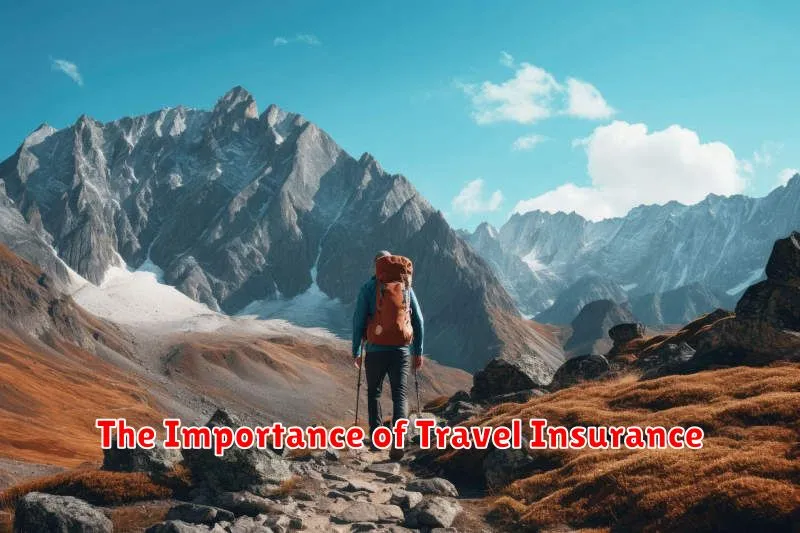
For first-time backpackers, travel insurance is more than just a suggestion; it’s a necessity. Think of it as your safety net while exploring the world.
Unexpected events happen. A sudden illness, a lost passport, a stolen bag – these can quickly derail your trip and drain your finances. Comprehensive travel insurance acts as a buffer, providing financial protection against such unforeseen circumstances.
It covers a wide range of potential issues, including medical emergencies, flight cancellations, lost luggage, and even evacuation in extreme cases. The cost of these events can be astronomical, easily exceeding your entire trip budget.
Choosing the right policy is crucial. Make sure it aligns with your itinerary and activities, covering the specific risks you might encounter. Don’t skimp on this essential protection; the peace of mind it offers is invaluable, allowing you to focus on enjoying your backpacking adventure rather than worrying about potential disasters.
How to Find Cheap Accommodations
Finding cheap accommodation is crucial for first-time backpackers. Your lodging budget can significantly impact your overall trip cost. There are several strategies to help you save money on your stay.
Hostels are your best friend. They offer dorm-style rooms (shared with other travelers) for a fraction of the cost of a hotel. Many hostels also have private rooms available if you prefer more privacy.
Consider staying in guesthouses or family-run lodgings. These often offer more personalized service and lower prices compared to larger hotel chains. Look for them off the main tourist drag.
Utilize booking websites and apps designed for budget travelers. These platforms often feature filters to help you easily find the cheapest options based on your location, dates, and preferences. Remember to compare prices across several sites.
Don’t be afraid to camp! If you’re adventurous and the weather permits, camping offers a remarkably inexpensive way to experience a destination. Just remember to check for permitted camping sites and necessary permits.
Couchsurfing is another option, allowing you to stay with locals for free. This is a great way to immerse yourself in the local culture, but always prioritize your safety and do your research beforehand.
Finally, be flexible with your travel dates. Prices often fluctuate depending on the season and demand. Traveling during the off-season or shoulder season can significantly reduce your accommodation costs.
Must-Have Apps for Backpackers
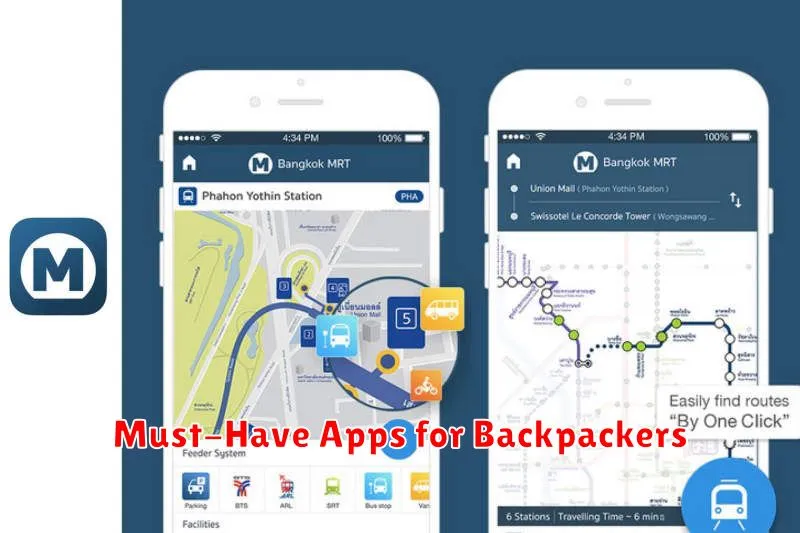
Navigating a new country as a backpacker can be daunting, but thankfully, technology offers a helping hand. These essential apps will make your trip smoother and more enjoyable.
Maps.me: This offline map app is a lifesaver. Download maps of your destinations beforehand, and you’ll have access to navigation even without internet access. It’s incredibly useful for finding your way around unfamiliar cities and towns, especially in areas with poor cell service.
Google Translate: Breaking the language barrier is crucial. Google Translate allows for quick and easy translations, both text and voice, which is invaluable when ordering food, asking for directions, or deciphering menus.
Currency Converter: Keeping track of your finances is vital. A currency converter app helps you quickly calculate conversions, ensuring you get the best possible exchange rates and stay within budget.
Booking.com or Hostelworld: These apps allow you to easily search for and book accommodations on the go. Finding a last-minute hostel or guesthouse is a breeze with these handy tools. Compare prices and read reviews before booking to ensure you get the best value.
Weather App: Knowing the weather forecast is essential for packing appropriately and planning your activities. A reliable weather app will keep you informed about potential rain, heatwaves, or other weather events.
Bonus Tip: Consider a VPN (Virtual Private Network) for secure internet access, especially when using public Wi-Fi.
Tips for Navigating Local Transportation
Navigating public transportation in a new country can be daunting, but it’s often the most affordable and authentic way to experience a place. Before you go, research your destination’s transportation options. Look into bus routes, subway systems, or train schedules. Many cities have user-friendly apps that provide real-time information and route planning.
Consider purchasing a local transportation pass or loading value onto a rechargeable card. This can save you money compared to single-ride tickets and make travel smoother. Familiarize yourself with the local currency and ticket purchasing process beforehand to avoid delays or confusion.
Don’t be afraid to ask for help! Locals are generally happy to assist lost tourists. Learning a few basic phrases in the local language, such as “Excuse me” and “Where is…?”, can be incredibly helpful. If you’re unsure about a route, consider using a ride-sharing app as a backup option, but be mindful of costs.
Finally, prioritize your safety. Be aware of your surroundings, especially at night or in less populated areas. Stick to well-lit and populated routes, and avoid displaying expensive electronics or large amounts of cash.
How to Stay Healthy During Your Trip
Staying healthy while backpacking is crucial for enjoying your adventure. Here’s how to prioritize your well-being:
Hydration is key. Carry a reusable water bottle and refill it frequently. Dehydration can lead to fatigue and illness. Consider using water purification tablets or a filter if tap water isn’t readily available.
Food safety is paramount. Choose well-cooked foods, avoid street food from questionable vendors, and wash your hands frequently. Pack non-perishable snacks to avoid relying solely on local options.
Sleep is essential for your immune system. Aim for at least 7-8 hours of sleep per night, even if your accommodation isn’t luxurious. Prioritize rest to prevent burnout and illness.
Hygiene plays a vital role. Carry hand sanitizer and use it regularly. Clean your hands before eating and after using the restroom. Keep yourself as clean as possible, given the circumstances.
Sun protection is non-negotiable, especially in sunny climates. Use a high-SPF sunscreen, wear a hat and sunglasses, and seek shade during the hottest parts of the day to avoid sunburn and heatstroke.
First-aid kit: Pack a small, comprehensive first-aid kit including essentials like bandages, antiseptic wipes, pain relievers, and any personal medications. Be aware of potential health risks in your destination and take necessary precautions.
Consult your doctor: Before you leave, schedule a check-up with your doctor. Discuss necessary vaccinations, recommended medications (such as malaria prophylaxis), and any specific health concerns based on your itinerary.
By following these simple steps, you can significantly reduce your risk of illness and maximize your enjoyment of your backpacking trip. Remember, prevention is always better than cure!
What to Do in Case of Lost Luggage
Losing your luggage is a backpacker’s worst nightmare, but staying calm and organized is key. Immediately report your lost luggage to the airline or transportation company. Obtain a Property Irregularity Report (PIR) – this is crucial for filing a claim.
Keep copies of your baggage claim tags and flight/ticket information. These documents will expedite the process. Contact your travel insurance provider to initiate a claim. Many policies cover lost or delayed baggage.
In the meantime, purchase essential toiletries and clothing items. Keep receipts for reimbursement purposes. Airlines often provide a small allowance for necessities while you wait for your luggage. Remember to check the airline’s website for updates on your lost bag’s location.
Be patient; recovering lost luggage can take time. Stay in contact with the airline and regularly check for updates. If your luggage is not found within a reasonable timeframe, contact the airline’s baggage claim department to discuss compensation for your lost belongings.

